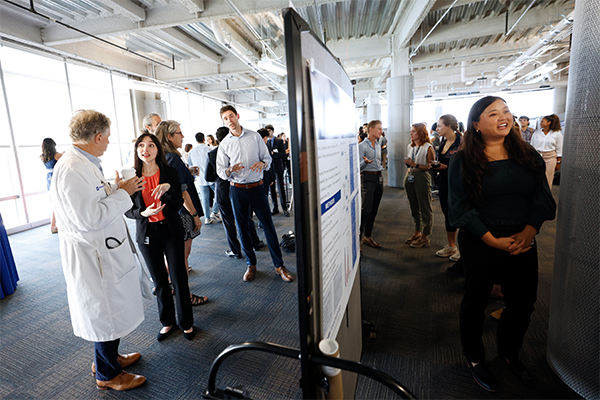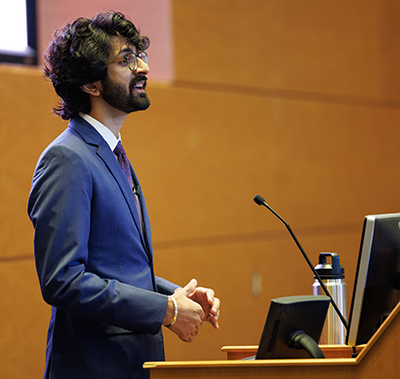
The next generation of medical professionals took center stage at the 55th annual Duke University School of Medicine Student Research Symposium on Aug. 1-2. The event highlighted the innovative work of third-year medical students who immersed themselves in a year of dedicated research.
“Our goal is to develop physician leaders through rigorous scholarly experiences,” said Daniel Laskowitz, MD, director of the third-year research program. “We want to equip students with not only the clinical skills but also the academic skills needed to change the face of medicine.”

This year’s keynote speaker Viviana Martinez-Bianchi, MD, director of health equity and associate professor in the Duke Department of Family Medicine and Community Health who leads the World Organization of Family Doctors, emphasized the importance of understanding patients’ lives to improve their health.
“Working for and championing health equity starts with a commitment to listening, to truly hearing the stories of our patients and understanding the social, economic and environmental factors that shape their health,” she said.
The symposium showcases the unique curriculum at Duke, where students gain invaluable research experience while pursuing their medical degrees. In 1959 Duke introduced a third-year research period lasting 10 months or longer. Initially focused on laboratory-based research, the program has since evolved to encompass a wider range of student interests.
Students presented their research findings through platform and poster presentations. Each year, faculty and mentors are actively involved in judging, reviewing, and discussing research results that ranged from cutting edge biomedical research to public health initiatives.
Symposium Awards
2024 Vice Dean Awards
-
Claudia Pena: Generation of antibodies for the diagnosis of acute and chronic Chagas Disease using phage display technology
-
Srijan Bhasin: Functional and Micro-Architectural Characterization of the Ventral Tegmental Area in Parkinson’s Disease with Depressive Symptoms
-
Lucy Zheng: “Everyone wants our cotton pickers”: Industrial Therapy, Involuntary Sterilization, and Black Mental Health at the State Hospital at Goldsboro, North Carolina 1880-1960
2024 GLAXOSMITHKLINE (GSK)
-
Kyle Calderon: Hemodynamic assessment of the pulmonary arteries and aorta using 4D flow cardiac MRI in children and young adults with dextro-transposition of the great arteries after the arterial switch operation
-
Michael Snider: Survival and Recurrence Rates Following SBRT or Surgery in Medically Operable Stage I NSCLC
-
Gabrielle van den Hoek: Multiplanar and 3D Imaging Modalities for the Evaluation of Right Ventricle to Left Ventricle Ratios in Patients with Pulmonary Embolism
-
Taylor Yoder: Integrated Diaphragmatic Function, Chemosensitivity, and Endurance in Exercising Divers